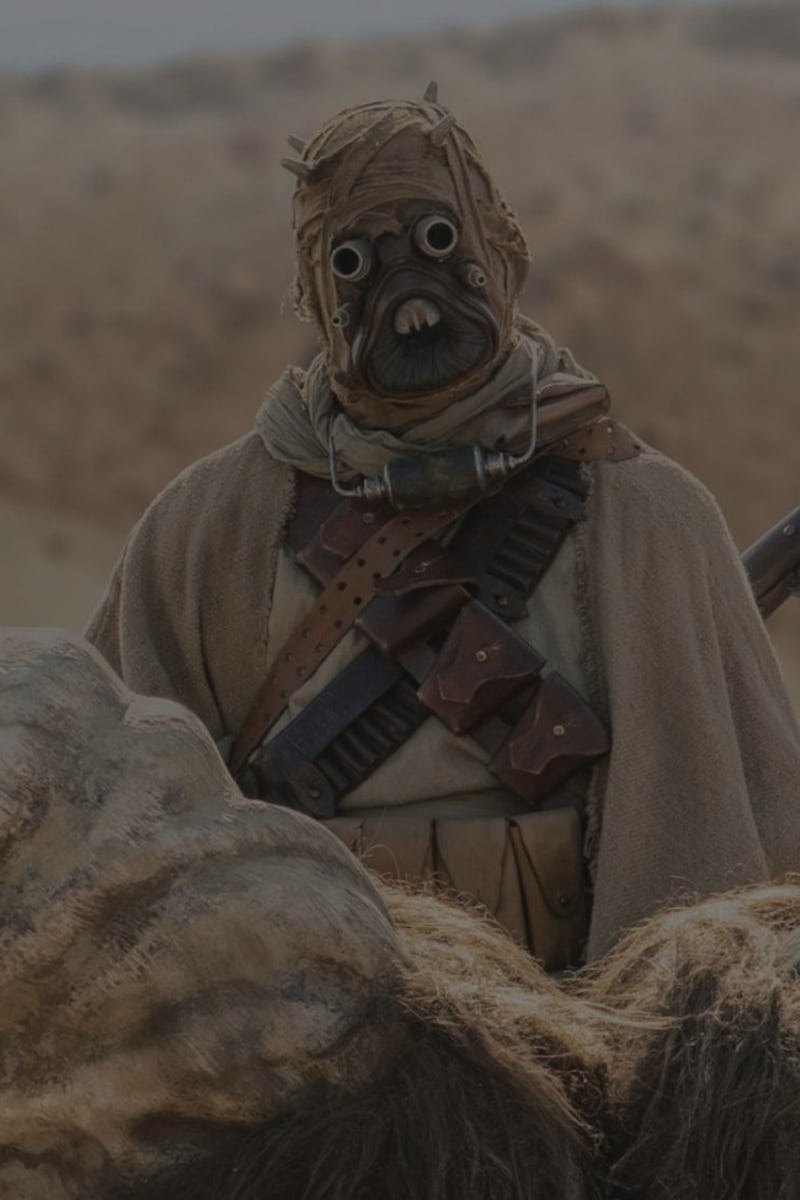
“Tuskens think they're the locals. Everyone else is just trespassing.”
'Boba Fett' just explained the best change from 'The Mandalorian' Season 2
by Dais JohnstonBoba Fett’s whereabouts after his supposed demise in the original Star Wars trilogy have been a hot topic of speculation. After the Season 2 premiere of The Mandalorian confirmed he survived, fans assumed from his garb and weapons that he was living among the Tusken Raiders, a surprising choice considering they’ve been portrayed as “savages” throughout most of Star Wars’ history.
The Book of Boba Fett’s premiere confirmed this theory, but also retooled the sudden redemption of the Raiders. Here’s how.
The Tusken Raiders have always been the faceless enemy for Tatooine. Whether it’s shooting at racers in the Boonta Eve Classic or murdering Shmi Skywalker to send Anakin to the Dark Side, they’re always on hand to antagonize the good guys.
But The Mandalorian Season 2 saw Mando communicate with the local Raiders to form an alliance with the people of Mos Pelgo. Together, the two factions successfully fought off a Krayt Dragon. This episode was quite the 180 for the Tuskens, who went from go-to barbarians to people just trying to survive.
WHAT’S YOUR FAVORITE SCI-FI MOVIE? Fill out this form for a chance to get paid to write an article for Inverse.
In The Mandalorian, the Tuskens are willing to communicate and co-operate with outsiders, which hadn’t been seen before.
So The Book of Boba Fett had quite the task ahead of it: incorporate the Tusken Raiders in a way that’s sympathetic enough to explain their Mandalorian appearance, but still vicious in a way that old-school fans would recognize.
The latter part of this dilemma is solved from the get-go. Boba Fett wasn’t “taken in” by the Tuskens, he was enslaved. In an Episode 1 flashback, he’s dragged through the desert (which explains his scarred skin), chained to a Rodian, and forced to dig for water.
The trick isn’t that Boba Fett discovered a soft side of the Tuskens that allowed them to open up and bring him into the fold, but that he earned their respect. On a desert planet like Tatooine, water is power. So when Boba is forced to dig for water-bearing fruit only to drink before handing it over to the Tusken child overseeing him, he asserts his dominance.
The slaying of the sand monster proved Boba’s worth to the Tuskens.
Moments later, when a giant six-legged sand monster attacks, Boba defeats the beast and saves the Tusken. He proves he’s a fearsome warrior and an asset to the Tuskens, whose chief offers him a drink in the final moments of the episode. Boba didn’t win over the Tuskens with compassion like Din Djarin in The Mandalorian. He won their respect.
It’s a big moment for Boba, but one that partially undermines much of the work accomplished by The Mandalorian. This sequence allows the Tusken Raiders to be just as bloodthirsty as they were in the original trilogy while still showing a logical side that will later come into play in The Mandalorian.
With The Book of Boba Fett, Lucasfilm had a rare chance to retroactively shift the character of an entire tribe. Maybe letting Boba Fett into their ranks is what introduced the Tuskens to the benefits of working with outsiders, which would mean the entire people of Mos Pelgo — and Mando himself — could owe him a lot more than just a set of Beskar armor.
The Book of Boba Fett is now streaming on Disney+.